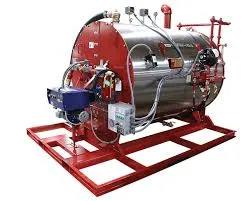
11-р сар . 16, 2024 13:21 Back to list
Methods for Modifying Water Levels in Steam Boilers for Optimal Performance
How to Adjust Water Level in a Steam Boiler
Maintaining the proper water level in a steam boiler is crucial for its safe and efficient operation. An incorrect water level can lead to various issues, including boiler damage, decreased efficiency, and even hazardous situations. This article will guide you through the importance of proper water level management and the steps to adjust it safely.
Importance of Proper Water Level
The water level in a steam boiler directly affects the heat exchange process. If the water level is too low, the boiler could run dry, causing overheating of the boiler components, which may result in catastrophic failures like tube rupture or even explosions. Conversely, a high water level can lead to water carryover, where water is carried into the steam lines, potentially damaging equipment downstream and affecting overall system performance.
Monitoring Water Level
Before making any adjustments, it is essential to monitor the boiler's current water level. Most modern boilers come equipped with a water level gauge, but supplementary monitoring through an automatic control system or regular manual checks is advisable. Regular monitoring helps you understand the typical operating range of your boiler and recognize any discrepancies quickly.
Adjusting Water Level
how to adjust water level in steam boiler

1. Manual Adjustment For traditional steam boilers, you may need to manually adjust the water level. This is typically done by regulating the flow of feedwater into the boiler. To increase the water level, open the feedwater valve slightly, allowing water to enter the boiler. Conversely, if the water level is too high, you may need to drain some water from the boiler through the blowdown valve.
2. Automatic Feedwater Controllers Many modern steam boilers are equipped with automatic feedwater controllers. These devices continuously monitor the water level and automatically adjust the feedwater supply to maintain the desired level. Ensure that the controller is calibrated correctly and functioning well to avoid issues.
3. Adjusting Water Makeup If there are substantial fluctuations in water level due to steam losses, consider adjusting your water makeup processes. This might include improving condensate return rates or ensuring that your deaerator is functioning efficiently to minimize steam loss.
4. Testing the Safety Devices Always check that the safety devices, such as low-water cutoff and high-water cutoff switches, are functional. These devices serve as fail-safes to prevent dangerous conditions. Regular testing is essential to ensure they respond correctly to water level changes.
5. Regular Maintenance Regular maintenance of your boiler can prevent unexpected water level problems. This includes checking valves, cleaning the water gauge, and inspecting the feedwater system. Regular inspections help identify potential issues before they escalate.
Conclusion
Maintaining the proper water level in a steam boiler is vital for its safety and efficiency. By closely monitoring the water level and making necessary adjustments—either manually or through automatic controls—operators can prevent damage to the system and improve operational efficiency. Remember, regular maintenance and testing of safety devices are essential to ensure the longevity and safe operation of your steam boiler.
-
Efficient Biomass Fired Hot Water Boiler | AI Heating Solution
NewsAug.01,2025
-
High-Efficiency Gas Thermal Oil Boilers | HPT Models
NewsJul.31,2025
-
Oil Fired Hot Water Boilers Sale - High Efficiency & Affordable
NewsJul.31,2025
-
High-Efficiency Commercial Oil Fired Steam Boiler for Industry
NewsJul.30,2025
-
High-Efficiency Biomass Fired Thermal Oil Boiler Solutions
NewsJul.30,2025
-
High Efficiency Gas Fired Thermal Oil Boiler for Industrial Heating
NewsJul.29,2025
Related PRODUCTS






















